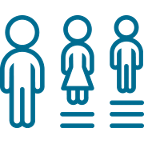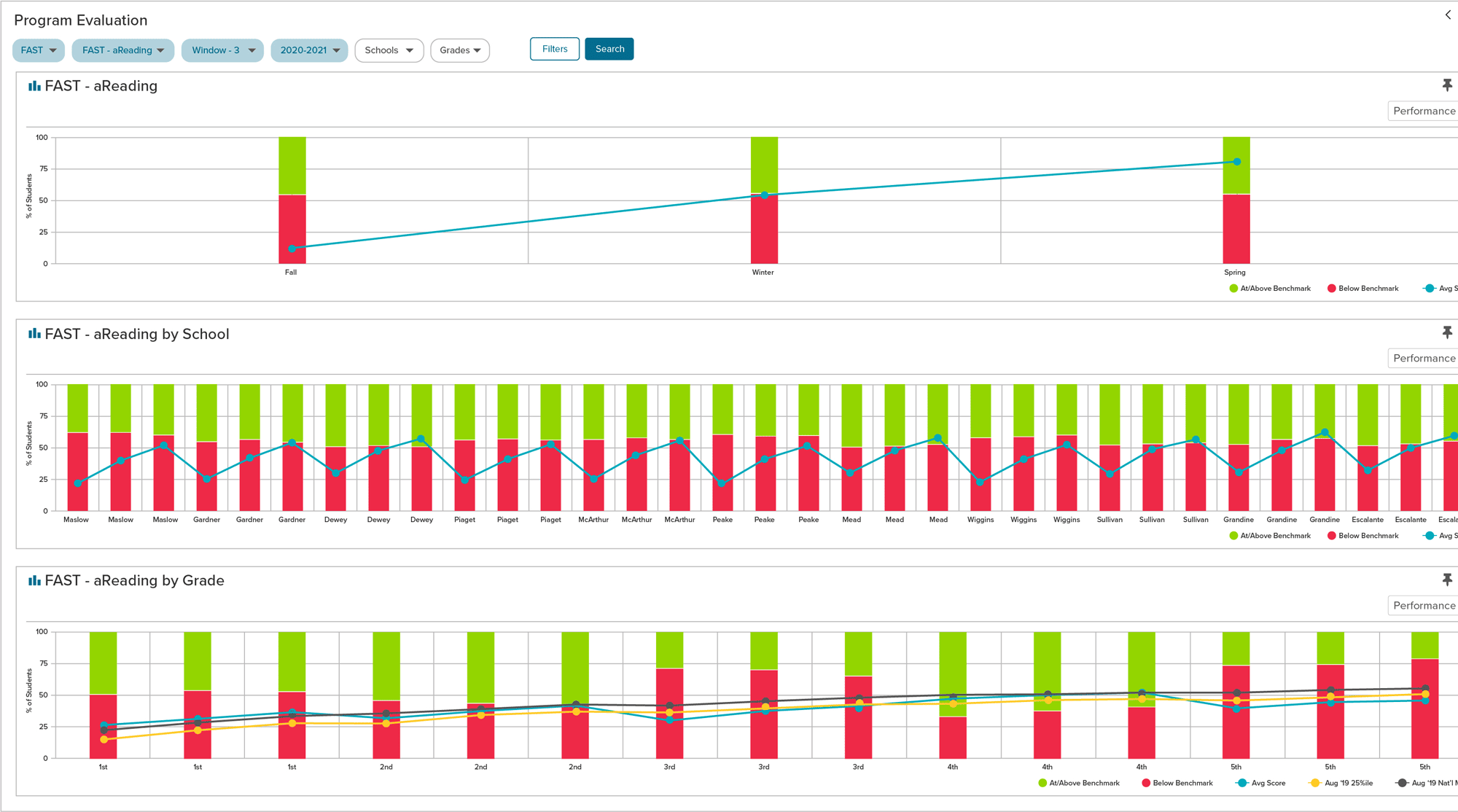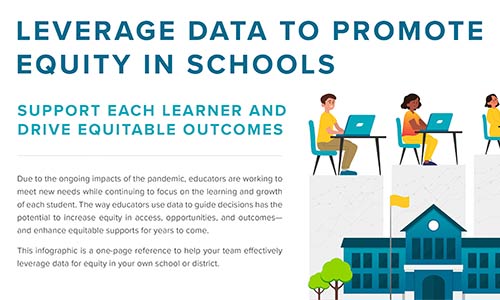
Start with the Right Data
The first step to driving equity in schools is to have the right data at your fingertips, and each key data source has an important role to play. Explore the examples below to learn how different types of data can be used to advance equity.
Universal Screening Assessments
-
- Do we see different levels of risk for different groups of students?
-
- Are risk levels disproportionate to our student population?
-
- Are students equitably decreasing in risk levels?
Progress Monitoring Assessments
-
- Do we see different levels of intervention effectiveness for different groups of students?
-
- Are interventions helping all students catch up to grade level benchmarks?
Interim
Assessments
-
- Do we see different levels of standards proficiency for different groups of students?
-
- Are the proficiency levels in our school proportionate to the student population?
-
- Are students equitably increasing in proficiency?
Just-in-Time
Assessments
-
- Are we conducting frequent checks on learning with all students?
-
- Are we providing effective feedback and opportunities for metacognition equitably?
Summative
Assessments
-
- Do we see different achievement and growth outcomes for different groups of students?
-
- Are our results proportionate to the population?
Attendance
-
- Do we see different attendance rates for different groups of students?
-
- Are our attendance rates proportionate to the student population?
-
- Are there groups of students with increasing or decreasing attendance rates?
Behavior Incidents
-
- Do we see different rates of behavior incidents and positive behaviors for different groups of students?
-
- Is there disproportionality in reported behavior incidents?
-
- Is there disproportionality in our responses to incidents?
School Climate
-
- Do all students feel safe and supported in our schools?
-
- Are there climate issues preventing different groups of students from attending to learning?
Discover Tools That Empower Change
Having all the right data is the first piece of the puzzle. The second is to have the right tools to identify, quantify, and explore inequity and disproportionality and to turn those insights into action. Explore a few of Illuminate's highlighted tools below.








